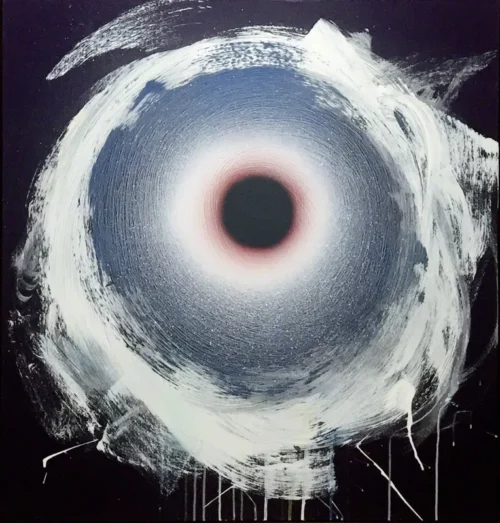
Dan Christensen
“a splash quite unnoticed
this was
Icarus drowning.”
William Carlos Williams (Landscape with the Fall of Icarus)
“The growing relevance of technology in artworks must not become a motive for subordinating them to that type of reason that produced technology and finds its continuation in it.”
Theodor Adorno (Aesthetic Theory)
“the opposite of play is not serious occupation but — reality.”
Sigmund Freud (The Relation of the Poet to Daydreaming, 1908)
I wanted to look at the growing irrationality of the West today by or through the lens of American cinema. And to a degree through the critical analysis of several different films. The first film in question is The Shining (directed by Stanley Kubrick, 1980) But I wanted to look several other films from the era preceding that. I wanted to touch on The Conversation (Francis Ford Coppola, 1974) as well, a film, which like The Shining, has now found its way into film school canons.
Now, I have always had a strained relationship to Kubrick’s work. An ambivalence. With Coppola I mostly see a simply hugely overrated director who made one somewhat remarkable but flawed film in Apocalypse Now, and a insanely popular melodrama franchise in The Godfather trilogy. But I wanted to start with The Shining because Fredric Jameson wrote a lengthy analysis of it (here https://scrapsfromtheloft.com/movies/historicism-in-the-shining/) and said analysis will serve as a useful springboard for further discussion of the director.
Now I have a strained relationship to Jameson, too, but this is a pretty solid bit of cultural analysis. And my reservations are only that I wish I had watched the film Jameson describes and not the one Kubrick made. That said (and there will be a lot of interrogation of my own ideas about Kubrick here) The Shining is probably one of my favorite of Kubrick’s films. I am not at all sure, however, how highly I actually value Kubrick’s work. (Dr. Strangelove is an outlier in a sense, but more on that below). But then it is also safe to say I do value it, and there is no denying Kubrick’s importance. Jameson sees The Shining as a kind of nostalgia for a Manichean certainty found in earlier films of the ‘occult’ genre, a sort of post sixties recapitulation of 50s Sci Fi (Invasion of the Body Snatchers).
“The Shining, then, though not an occult film, nonetheless envelops the new ideological genre of the occult of its larger critical perspective, allowing us to reinterpret this still “metaphysical” nostalgia for an absolute Evil in the far more materialistic terms of a yearning for the certainties and satisfactions of a traditional class system.”
Fredric Jameson (Historicism in The Shining)

Raphael (St Michael vanquishing the dragon, detail.) 1504
This is, however, an odd observation. And a misreading of Kubrick, I think. The butler and bartender scenes are hardly representations of a yearning for traditional class roles, but rather a probe of the sado masochistic tendencies of fascism, and if anything are a yearning for colonial domination of the proletariat. Kubrick always found the peculiar fetishized rituals of bourgeois authority fascinating (from Full Metal Jacket, to the space lounge in 2001, to Clockwork Orange). For fascism was at the heart of much of the director’s work. And this is partly why he is a far deeper filmmaker than Coppola. On a purely technical level Kubrick is DaVinci to Coppola’s earnest Ghirlandaio. And thats unfair to Ghirlandaio, because The Conversation is actually pretty clumsy filmmaking. And it is clumsy writing, perhaps more importantly. Harry Caul, the erstwhile protagonist of The Conversation (Gene Hackman) is a lonely dysfunctional tech nerd now lurching into middle age. He is religious, in a perfunctory sort of way, but this feels utterly unexplored by Coppola. But Caul ‘is’ a tech expert (though hardly genius) and like many 70s films the villain is the amorphous faceless institutions of government. (Harrison Ford’s one decent performance, and one of his first, as an unpleasant young office gatekeeper to the real authority – an uncredited Robert Duvall). Coppola is not really interested in political issues, though, and this is one of the drawbacks for Apocalypse Now. But Caul is never developed deeply enough to allow this film to become Kafka or even Marquez or Kundera. There is no deep psychoanalytical examination (imagine Pasolini making this film. Hell, imagine Polanski making this film.) The film never rises to the level of allegory or parable. It does not remotely reach discussion with Dick or Pynchon. It is a modest sort of description of paranoid inclinations built into technology (pre internet). But this film resembles a good many ‘new hollywood’ films from the 70s (mostly). And one of the problems with that era in American cinema was a dearth of serious writers. (there are a host of exceptions, from Alan Sharp to Robert Towne, but the point is more about a sensibility toward text).
Also, the final scenes of Caul tearing apart his apartment is so over the top as to be silly. If we had simply seen him checking for bugs, his polycotton shirt wet with perspiration, that would have been more than enough.

Cleve Gray
It is worth remembering how many of those 70s films were revisionist genre projects (Klute and Parallax View, both directed by Alan Pakula. From 71 and 74 respectively). Chinatown was 74, and French Connection (Freidkin) in 71, Serpico 73 (Lumet) and Dog Day Afternoon (also Lumet) in 75. Nightmoves (Penn) in 75 and Don’t Look Now (Roeg) in 73, Charley Varrick (Don Siegal) in 73, and The Getaway (Peckinpah) 72.
Now one might divide this group according to the sincerity with which the auteur/director approached the project, and the genre. Because viewing them now (and I did revisit most of these over the last week) one is struck with how badly the less sincere have aged. Pakula’s stuff is almost unwatchable now. The best are from Siegal and Penn and certainly Freidkin. And Polanski, but for different reasons. Now Lumet was a frustrating figure. From his early Fugitive Kind, 61 (which is great mostly for Brando and a Tennessee Williams script) and The Hill (65) to Q&A (1990) and Prince of the City (1980) you also got The Wiz and Lovin’ Molly. It is hard to know quite what to do with Lumet. He was intelligent, a craftsman, but one without a consistent vision. Without any vision, really. In retrospect William Freidkin emerges as the greatest (English language) filmmaker of this era save for Kubrick, probably. And honestly, The Exorcist, To Live and Die in LA, Sorcerer , Cruising, and French Connection are all pretty darn close to Kubrick’s best work.
Andrew Sarris, an insightful critic and devotee of Cahiers du Cinema, wrote negatively of Kubrick (but this was 1968 mind you and he retracted much of it later). This is also, for me, that curious problem of blaming artists for their particular audience. The Kubrick champions are irritating, usually liberal, and educated (in expensive universities) and white.
For cinephiles in 70s NYC, Sarris’ book was a bit of a bible. And if someone had said (per above article) ‘strained seriousness’ I must admit I would have instantly known what they meant, too. But Sarris wasn’t entirely wrong about Kubrick. The Killing is a lesser sunlit noir of the era, and Paths of Glory is not all that convincing either. Sarris, as noted in the above article, was a nearly lone voice in questioning Coppola (the author of the article takes it as given that Coppola is major). He also questioned early Scorsese. I once complained that both Kubrick and Tarkovsky carried with them a tiny taint of the bourgeois sensibility. In a way Pasolini and Fassbinder, or Antonioni even, did not. Nor did Bresson or Mizoguchi. Or Dryer, certainly, and largely not Ozu. But Kurosawa did. If one wanted to examine Barry Lyndon, one would have to screen Bresson’s Lancelot du lac and Rossellini’s Rise of Louis IX. Because Sarris was right in a sense (and Jameson might want to reflect on this) that sensibility is the fingerprint of the auteur in cinema. Sarris was right about John Huston, too, though it saddens me to acknowledge it. But this is the paradox of cinema as art. Huston’s enduring masterpiece is Treasure of Sierra Madre but it doesn’t change the fact he was finally a very derivative director. Fat City was great, too, but that is not the point (as Kent Jones rightly notes in the article on Sarris).

Alex Dodge
How films age is revealing. The Shining feels oddly dated, a cultural relic in a sense (and I say this again noting I really do admire the film). It is a film of narrative interruption. And while Kubrick could fudge narrative structure in 2001, because after all it was outer space, and eternity, and Darwin and the cosmos, it was more troubling in The Shining. The Scatman Crothers narrative tributary is simply wasted. And it is a bothersome waste because Crothers himself was much needed oxygen both in screen presence, and as a sort of inoculation against the residue of Stephen King that clings to the story. Crothers was American history by just appearing. But that stream of oxygen is simply killed. Crothers was a near greek chorus here, and its dreadful miscalculation to abort that story line. Or abort it without noting the affects. That choice, by Kubrick, feels oddly insensitive.
There was so much more, too, to be found in the out of season hotel, empty through the winter. Found in the sense Bachelard might have found in it, or Walter Benjamin. Or any Marxist. It is unfair to compare this to Death in Venice, perhaps, because Stephen King is not Thomas Mann, but then Kubrick chose King. He had the flop of Barry Lyndon and this was a rebound attempt to find commercial validation (and it did). But the Visconti version of the Mann novella drips with a tragic resignation, and without the need for anything supernatural. Dirk Bogard’s dyed hair was so painful, so sad and haunting that nobody ever forgets it. This is uncanny in a more subjective sense than The Shining. Crothers might have become something like the film’s Tadzio, but its also wrong to rewrite artists. Amir Abou-Jaoude in his review of Visconti, wrote ” Visconti’s “Death in Venice” is not just a gay romance, but a meditation on the demise of bourgeois values. { } Although Visconti came from the upper echelon of Italian society, in contrast to his protagonist, he did not possess bourgeois taste. While his forebears had ruled Milan during the Renaissance, Visconti was not concerned with his heritage, just the here and now. Preoccupied with the plight of the lower classes, he joined the Italian Communist Party and became a lifelong Marxist. Enamored with the performing arts, he chose to pursue the lowly vocation of a theater and film director.” (The Stanford Daily, 2019)
Visconti was driven to find the forces behind historical events. As did Rosellini, both from upper class families. Death in Venice was critically eviscerated. It was the front edges of necessary gay affirmation and the Visconti is not that. In fact its not a gay film (per se) at all. It is a meditation on the death rattle of European bourgeois society, resonantly symbolized by quarantined Venice. A Marxist perspective on the ascension of kitsch (von Aschenbach’s music) amid the dying embers of haute bourgeois repression (and bourgeois blindness) was not going to find critical favour. And the simple pathetic rejection of aging, the purely physical lust masquerading as Grecian idealism, from a morose old queen was unpalatable to the new queer culture of the period.
“Metageneric production becomes, whether consciously or not, the solution to this dilemma: the war movie (Altman’s Mash [1970], Kubrick’s Paths of Glory [1957]), the occult (Polanski’s Rosemary’s Baby [1968], Kubrick’s The Shining [1980], Roeg’s Don’t Look Now [1973], Polanski’s The Fearless Vampire Killers [1967]), the thriller (Polanski’s Chinatown [1974], Kubrick’s The Killing [1956], Roeg’s Performance [1970]), the western (Altman’s McCabe and Mrs. Miller [1971] and Buffalo Bill and the Indians [1976], Penn’s The Missouri Breaks [1976]), and science fiction (Kubrick’s 2001 [1968] and Dr. Strangelove [1964], Roeg’s The Man Who Fell to Earth [1976], Altman’s Quintet [1979]), the musical (Altman’s Nashville [1975]), the “theater of the absurd” (Polanski’s Cul-de-sac [1966]), the spy movie (Roeg’s Bad Timing [1980]), – all of these films use the pregiven structure of inherited genres as a pretext for production which is no longer personal or stylistic in the sense of the older modernism. “
Fredric Jameson (Ibid)
This is another odd bit of tautology, almost. Genre IS pregiven structure. Genre IS inherited style cues and grammar, both visual and textually. And today, as I have said often, *all is genre*. It is also worth noting that Bad Timing is not really a spy movie nor is Chinatown a ‘thriller’. The Polanski is a detective film (i.e. film noir, hardboiled pulp fiction). It is a gloss on the style certainly but much of the genuine anguish of that film is Towne’s screenplay. Maybe I just don’t fully buy Jameson as a film nerd. He is slumming here a bit. Much as Pakula and Altman were always slumming. Now I have to write just a bit about Altman who I have never liked at all. First off, improvised dialogue is always always always terrible. Even with the best practitioners. Altman is the quintessential example of the director who feels above the genre, above the audience, in fact. But text is critical, and as Jameson notes but seems not to understand fully.
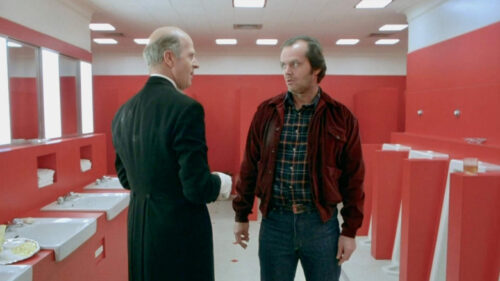
Delbert Grady and Jack Nicholson (The Shining)
“[c]learly, Stanley Kubrick isn’t primarily interested in the horror film as scary fun or for the mysterious beauty that directors such as Dreyer and Murnau have brought to it. Kubrick is a virtuoso technician, and that is part of the excitement that is generated by a new Kubrick film. But he isn’t just a virtuoso technician; he’s also, God help us, a deadly serious metaphysician.”
Pauline Kael
Kael never liked Kubrick much. But there is truth in her comment. And six films over thirty some years is a curious statement on the business of Hollywood. But Kubrick’s reputation resides a lot on this idea of virtuosity. For US and UK audiences the virtuoso will always find critical approval.
What separates Kubrick from most everyone else is, indeed his virtuosity, but also his olympian good taste. His fanatical attention to the detritus of culture and the reflection of suffering found in the shiny surfaces of commodity society. Kubrick probably needed to be more discerning (if lack of discernment was even the problem) in how he chose projects. One senses a certain mercenary calculation where it would have been better to see genuine metaphysical zeal. But, it is also hard to deny the many transcendent sequences in Kubrick films. The problem for me is those sequences and scenes never pull together or coalesce into a complete work. I’m not sure Kubrick cared about ‘endings’. Kubrick can be seen as a enhanced version of Joseph Losey, in a sense. Losey was most active in the 60s, but he foreshadowed much of the ‘New Hollywood’ of the 70s. Losey had studied with Brecht. A Wisconsin boy who shed his bumpkin adolescence to become a strikingly sophisticated theatre and film artist, and social magnet. He was also active politically, to a degree, and worked with the Federal Theatre Project (a target of HUAC). He accompanied Brecht when he appeared before HUAC, in fact. He also had traveled to the USSR to study theatre (and met Eisenstein apparently). Losey, like Kubrick, did not grasp fully how Hollywood worked. When Howard Hughes bought RKO and began purging communists and leftists, he found and fired Losey. Years later Losey recounted:
“I was offered a film called I Married a Communist, which I turned down categorically. I later learned that it was a touchstone for establishing who was a “red”: you offered I Married a Communist to anybody you thought was a Communist, and if they turned it down, they were.”
(Losey on Losey, ed. Tom Milne)
It strikes me Elon Musk is not unlike Howard Hughes.
“You could almost see Losey become a kind of Stanley Kubrick figure, waiting for taste to catch up with him and history to forgive him and then apologize.”
Scott Tafoya (The Intruder: Joseph Losey’s Artistic Exile)
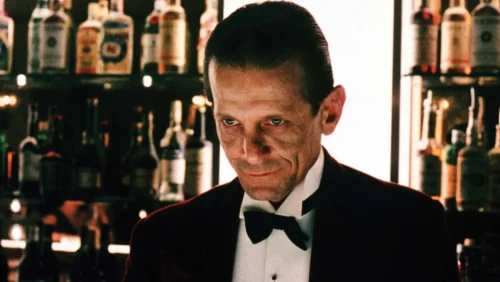
The Shining (Dr. Stanley Kubrick. Joe Turkle as the bartender)
Losey had become good friends with Harold Pinter and directed three Pinter screenplays (The Servant (1963), Accident (1967) and The Go-Between (1971)) And these are far and away his best films. Losey was both antagonistic to film as a medium, and obsessive about the making of film. Critics never understood his work, I don’t think, and looking back those three Pinter films stand up better than almost anything from that period. The contrast with Kubrick is interesting if we return to Jameson’s review.
“T.W. Adorno’s account of the fate of “style” in contemporary literature and music proposes the concept of pastiche to describe the recourse of Stravinsky, Joyce, or Thomas Mann to dead styles and artistic languages of the past as vehicles for new works. Pastiche, in Adorno’s sense, must be radically distinguished from parody, which aims at ridiculing and discrediting styles which are still alive and influential: it involves something of the same distance from a ready made artistic instrument or technique, but is meant, rather like the copying of old masters or indeed forgery, to display the virtuosity of the practicioner rather than the absurdity of the object (in this sense, late Picasso can be said to constitute so many master forgeries of “Picasso” himself). Pastiche seems to have emerged from a situation of two fundamental determinations: the first is subjectivism, the over emphasis and over-evaluation of the uniqueness and individuality of style itself – the private mode of expression, the unique “world” of a given artist, the well-nigh incomparable bodily and perceptual sensorium of this or that new claimant for artistic attention. But as individualism begins to atrophy in a post-industrial world, as the sheer difference of increasingly distinct and eccentric individualities turns under its own momentum into repetition and sameness, as the logical permutations of stylistic innovation become exhausted, the quest for a uniquely distinctive style and the very category of “style” come to seem old-fashioned. Meanwhile, the price to be paid for a radically new aesthetic system in a world in which innovation and fashion-change have become the law (Adorno’s example is Schoenberg’s twelve-tone machinery) – that price, both for producer and consumer, becomes increasingly onerous. The result, in the area of high culture, was the moment of pastiche in which energetic artists who now lack both forms and content cannibalize the museum and wear the masks of extinct mannerisms.”
Fredric Jameson (Ibid)
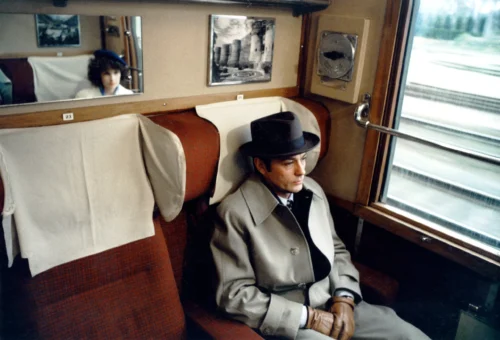
Mr. Klein (dr Joseph Losey, with Alain Delon, 1976)
Jameson goes on to note that pastiche, the cannabalizing of earlier forms, turned to genre and away from so called high culture. This is an acutely perceptive observation. The waning of classical modernism (per Jameson) results in a sort of new dialectic of nostalgia. This gave birth to ‘camp’ indirectly. But I would argue the post modern (itself something of an illusion) is simply a de facto prison house of genre. Everything today is bathed in the shadows of high modernism and cannot but be one or another genre form. (hence observations from many critics that Star Wars is a space western, etc etc etc etc). From one perspective everything is now a western.
Jameson posits the end of genre and I posit the engulfing of all cinema ‘by’ genre. Not other mediums, though, certainly not to the same degree. Some of this is the historical evolution of filmmaking and its origins as a seaside attraction, and then the rise of the studio system. And one of the things that happened was the development of a sort of cinematic unconscious (or what Jameson called the metageneric). The lesson of French auteur theory is really one of mimesis. The audience translates (or transiliterates often) in both textual and visual ways. The meaning is ultimately always a return of the repressed. Meaning itself as a concept is inextricable from form. And the *story*, the (per Hullot-Kentor) karaoke of the self is of necessity our graverobbing our own graves, graves we dont yet inhabit. This is the message of all stories (and in one way, the reason improvised text always fails). And why Altman’s *western* (McCabe and Mrs Miller) is close to parody and not more. Why John Ford’s westerns are usually so unsettling, or Hawks or Mann. It no doubt matters that Ford began making movies way back in 1919, if we even know what his earliest movies were. American history is embedded in Ford. The American rugged pragmatism is expressed by Hawks framing, and eye level camera.
“The Jack Nicholson of The Shining is possessed neither by evil as such nor by the “devil” or some analogous occult force, but rather simply by History, by the American past as it has left its sedimented traces in the corridors and dismembered suites of this monumental rabbit warren, which oddly projects its empty formal after-image in the maze outside (significantly, the maze is Kubrick’s own addition). “
Fredric Jameson (Ibid)
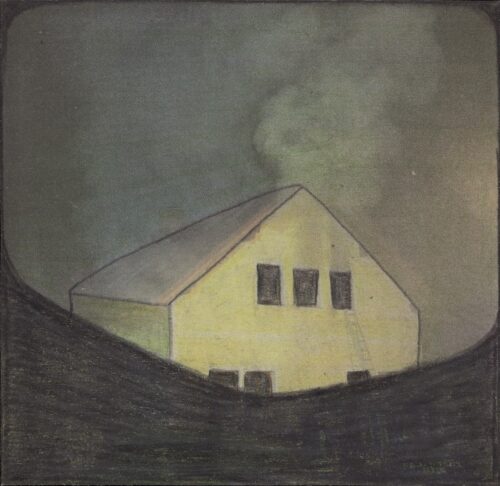
Leopold Strobl
Sarris admitted he was wrong about Billy Wilder, and it is rare a critic has such conversations with himself, or changes his mind. What is interesting is how highly he rated Losey, when one might not have expected that. But while he was wrong about not just Wilder and Kubrick, but he had a consistent vision that he struggled to explicate. This is truly admirable, I think. And looking over his lists now, it is to his credit to recognize Budd Boetticher’s significance as well as Don Siegal, Jacques Tourneur, and Frank Tashlin. This was not standard fare for US critics of the time. He has been criticized for the Strained Seriousness category but he had his logic. And while I value Richard Brooks far more, and Karel Reisz and Tony Richardson, its not like I would go to mat defending any of them. I would to defend John Sturgis, however. And Robert Rossen. And I’d have Siodmak in my pantheon, period. And he wildly overvalues Cukor and Donan (though I get the latter to a degree, if only for Singin’ in the Rain)..but Charade, for example, has aged very very badly. He overrated Minelli, too, and probably Leo McCary. He wrote an elegant appraisal of Preminger, a director I both revere for his early noirs, but whose politics are repellent. Sarris writes “, and the opening dance scene in In Harm’s Way invoking in one slowly movingshot the entire Glenn Millerish Zeitgeist of the forties”. This is an astute and lovely observation, and its true.
One could nitpick all night (and we used to back in the cinephile days of my youth) but such is the nature of lists. My point is really that Sarris had genuine importance and he brought Cahiers thinking to the English speaking world. To write of film at all is to fall into a rabbit hole that one can never return from. I already, writing this, feel the pull.
But it is important, I believe, to explain what the Cahiers critics were talking about (and by extension Sarris). And to do that, actually, we have to return to Jameson, and to Adorno. And I will say again the hostility to Adorno continues to amaze me. So let me sort of leap to a collection of essays by Jameson ‘on’ Adorno (this is late stuff from Jameson, and it has changed my mind a good deal ABOUT Jameson). And these are class notes and transcripts of lectures. They are presented in screenplay form, actually (well almost).
A student starts one of the lectures:
“Therefore, Adorno always discusses concepts [Stressing] in context…{ } Concepts emerge as part of the texture of the text in Adorno. [Pause.] This also calls attention to Adorno’s use of proper names, and these are especially visible in Aesthetic Theory. Proper names for him work differently… [Pause.] They don’t relate primarily to something like a body, for when you think about a proper name like “Kant,” “Hegel,” “Nietzsche,” you think about a body of works, or texts on their own, and then these names relate to the texts. And that’s not the way they work for Adorno. For Adorno, the names are categories, so when he says “Hegel,” this means, hmm… [Hesitates] this is a category which works according to the logic of the text. And this category has [Stressing] a place in the text, which can work very differently, because it is subjected to the text’s movement, to the categorial progression. Therefore, proper names acquire meaning in relation to the place they have in Adorno’s texts.”
Fredric Jameson (Mimesis Seminar)

Mitchell Johnson
Adorno saw concepts as having history embedded in them. He was not interested in inventing new neologisms or a new grammar per se. And this was because History was always somehow the topic. But this embeddedness is very crucial to understanding Cashiers approach to film, too. Auteurs are the proper names of film analysis.
Student continues: “and the thing about Wahrheitsgehalt is that Zuidervaart makes the whole point about the truth content of artworks and how artworks are political because they absorb into themselves historical processes, but in a non-conceptual way,
like in a monad.”
Fredric Jameson (Ibid)
Lambert Zuidervaart is an Adorno scholar and one I have mentioned before as particularly useful. The other point being emphasized is that there is an aesthetic principle of organizing. And that Adorno’s writing was always interrogating this principle. And this means a focus on discontinuity. And discontinuity provides Adorno with an ability to create (what he calls) constellations. It all becomes circular, in a sense and this is hugely important for how Adorno views art, history, and the manner in which meaning ages. The manner that artworks age. And this is something I am trying to get at with this discussion of New Hollywood films in the 70s. The meaning of art is always partly political because it is historical. And Hollywood film has influenced western consciousness to a rather profound degree.
What is noted in this lecture is that Adorno’s book Aesthetic Theory is structured around a missing middle. The dialectical reversals are always running up against this absence. But the absence is clearly pregnant with Freudian implications.
Student continues:
“This is why I contend that the middle point stands for the Revolution; it points or towards rebellion, and here are some arguments for that. First of all, among all these options, it is clear that a satisfactory one should not be present in the book as such, and one can’t find the concept of revolution used in this strong sense there. The revolution… [Sighs] is there, but not as an event, there is no resolution for the revolution there… [Jameson laughing.] But for Adorno, as for Benjamin, the revolution is the, hmm… [Hesitates] you know, of course, a concrete event, but it is also an epistemological ideal, it’s a point from which things acquire a different character; from the messianic light, things appear differently. And of course, there are critics who say that the revolution is just a regulatory concept, like in Kant, that you can never get to it, but just measure yourself against it. I disagree with that, because the revolution is something that might be started at any moment as a concrete event, just like the Messiah may already be here now. But at any rate, and then I guess it… “
Fredric Jameson (Ibid)
This is just brilliant (and Jameson introduced this student as being ‘brilliant’).
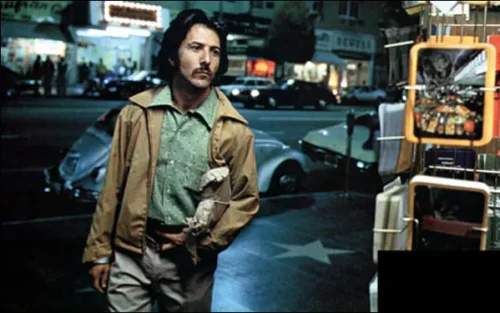
Straight Time (dr. Ulu Grosbard. 1978).
“in order to be disclosed…the objective wealth of meanings encapsulated in every intellectual phenomenon demands of the recipient the same spontaneity of subjective fantasy that is castigated in the name of objective discipline.”
Theodor Adorno (Essay as Form)
Adorno adds…“it is scarcely possible to speak of the aesthetic unaesthetically.”
One might say the same for criticism. And the value or importance of any particular artwork (or artist I suppose) is partly found in how receptive this artwork is to aesthetic critical evaluation. On a mundane level, great or important artworks resist commodification and expository explanation. And this is true even of film. One film that has aged remarkably well is Straight Time (directed by Ulu Grosbard, and to a large degree Dustin Hoffman the lead actor). Made in 78, and written by Eddie Bunker. And full disclosure I knew Eddie and worked on Animal Factory for Steve Buscemi. But Straight Time was not made by an auteur director but the auteur was Bunker himself, the writer. And this was a film that incarnated its genre identity, it looked to penetrate the dark soul of crime genre (French Connection did this, too, to some degree, and even Friends of Eddie Coyle). But Straight Time is a perfect example of the embeddedness of history, the inscribing of this refusal, this suffering and from another angle than the Visconti, on the end of bourgeois culture and sensibility. It never moralizes but constitutes a clear indictment of class riven America post WW2.
Jameson then continues the lecture himself:
“…and if you want to know what Versöhnung is, well — our relationship to formed reality is to negate it. That’s why it has to be what you’re calling a “strong subject.” That won’t be Ego stuff, in the Lacanian tradition, I think, but it would be taking a position from which one can negate and refuse. [Pause.] The great refusal from Dante was also one of the things that Marcuse liked to talk about. Mm-hmm… [Pause.] So, and if you [Whispering] affirm this reality, then we’re in positivism and you fall prey to different forms of conformism, social commodification and so on and so forth.”
Fredric Jameson (Ibid)
Here the question of genre surfaces once again. And perhaps genre has now accumulated enough of the fallen scraps of meaning from high cultural projects and institutions to congeal a new layer of meaning — genre is then deeply psychoanalytic, and political. All stories are crime stories, all stories are about exile. Our mothers only love us as criminals, Lacan observed (somewhere), and this is the pure almost pristine story of Straight Time.
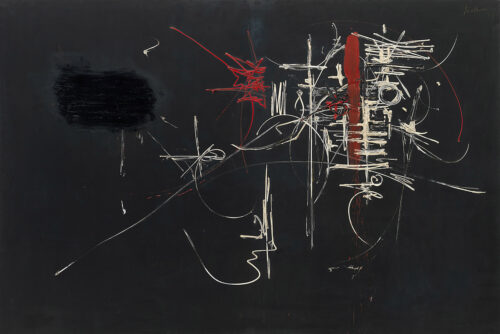
Georges Mathieu
The path, post WW2, that American cinema followed was the cleansing of anything remotely collectivist or remotely socialist. As the Nazi ideology dispersed and went into semi hiding, the rightward lurch of US foreign policy and domestic policy inched forward. The sixties was subsumed and cancelled, essentially. The effects lingered and those effects, the fallout from the cultural revolution of the sixties can be detected in later genre. If the Dulles brothers and Israel orchestrated the hit on JFK, then there was also the start of mass manufacturing of narrative by government. New Hollywood of the 70s was fascinated by paranoia (Watergate was 72 to 74 ) and yet had no way to coherently express this. A Pakula could only point to anonymity, the faceless bureaucrat or secret arm of intelligence. His films point to the emptiness but cannot express it. It is the wrong ‘absence’. The revisionist genre films so embraced by film schools are expressing a certain blindness and inability to see behind the marketed image. A trajectory that ends with Spielberg. And there is an entire discussion to be had about Walt Disney at this point. For Disney enabled the rise of filmmakers like Spielberg,.
The noir films of the late 30s and 40s were dark meditations on authority and their paranoia was in the pace, the mise-en-scene and in the actors. And, those often Jewish/German emigre directors, and even the American versions, were class conscious. But that consciousness was in the context, in the sensibility and taste of the project. Those directors turned whatever script they were given into something serious. In a sense it wasn’t genre, it was something more to them. Or perhaps a hybrid tragic form. And this has to do with, as I speculate on this, with WW2. All film noirs (nearly) were about fascism.
“And I think that the whole focus on Germany, we can see in this business of Gemeinschaft and Gesellschaft, which we have also discussed. The word Gemeinschaft or “community” comes up a great deal in these proto-Nazi discussions in the Weimar period of the 1920s Because what these people were saying is that, primarily… the collective consciousness of the Gemeinschaft is much more important than individualism. All this is already moving towards the Nazi mass mobilization and the fascist state. The Gemeinschaft is the archaic. “
Frederic Jameson (Ibid)
And there is a discussion to be had regards digitalization. But I will do that in part two (for this is clearly a two part posting).
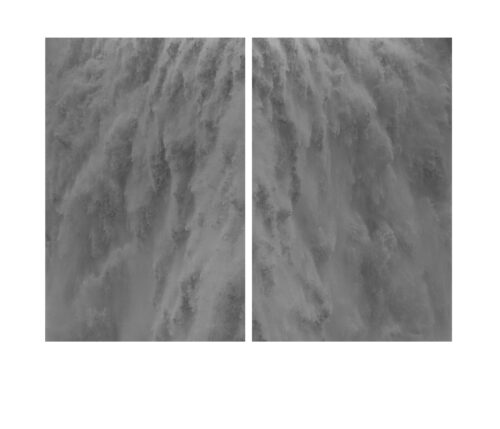
Sam Laughlin, photography.
But here I think it is worth going back a bit, following Jameson’s seminar lectures, to Adorno’s ideas on mimesis. Now all significant artworks (after say the 1920s) are socially undesirable. And this is where Freud’s simplistic ideas about art and sublimation need to corrected. Jameson notes Adorno felt this way and probably eventually so did Freud. And here is key paradox in Adorno. He needed (to explain mimesis, and other ideas) for the subjective to concrete. To be ‘objective’. It is historical.
“…this idea of mimesis plays a very central role in his theories about art. In Adorno, mimesis is this primordial activity, and hmm… [Quietly: it’s both good and bad in some respects.] Mimesis, it’s almost a mythical activity and there is a layer of this activity which does refer back to some sort of primitive society; it is some sort of anthropological thesis from which modernity and contemporary culture, hmm… [Hesitates] needs to be distinguished. But I think, in this case, mimesis, it’s even pre-animistic, that is, it’s not yet even religious or cultic or whatever. [Softly.] What does mimesis suggest? Does it suggest that there is some impulse or drive in human nature to make pictures of things? I think it’s very hard to figure this out and it comes in at various points, as though Adorno had already written a treatise on this, which he never did. I don’t believe myself that Benjamin’s early essays on this — “speech as mimesis,” and so forth, those are Benjamin’s essays form the 1930s — I don’t think that they shed any light, and frankly I don’t think these two essays by Benjamin are talking about the same thing, though Adorno sometimes says they are. [Pause.] So, it’s very hard to know what to do with this notion of mimesis.”
Fredric Jameson (Ibid)
This is funny, but very good, and rather different from much earlier Jameson on this concept. But anyone who spends a lot of time and energy on Adorno comes to share the private joke of ‘mimesis’. For its superbly impossibly elusive. And yet it is also right there, and impossible to ignore. So at this point Jameson introduces two forms of reason: instrumental reason, and dialectical reason. I’m not sure this holds up, buts its maybe useful for discussion. And I have a number of blogs post here on this topic. But instrumental reason is predicated on a knowledge that serves to conquer. Domination over nature. It is linked somehow, in complicated ways, with the idea of progress.
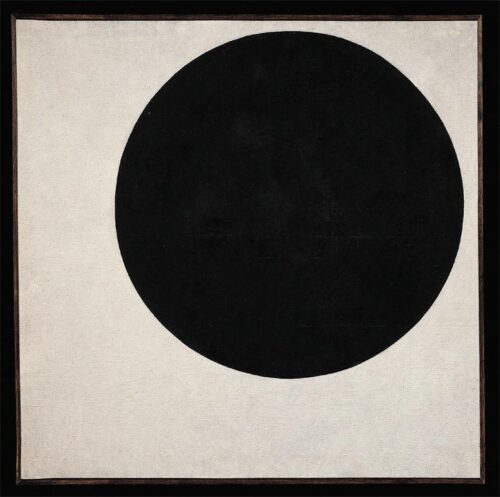
Kasimir Malevich
“But the point about instrumental reason, or what they’re now calling Enlightenment, is that it — like revolutions — it devours its own children.”
Fredric Jameson (Ibid)
Adorno (and all the Frankfurt thinkers) saw as a primary theme ‘degradation’. Things, consciousness, reason, …. almost everything has been degraded and in the process of degrading. The idea of entertainment is intwined with film culture. And it was there from the very start. When looking at film, and the interrelationship between commerce and filmmaking, between commerce and art, it is very hard to track compared to music. Adorno wrote extensively about music. In film there is no history of the ‘tonic chord’. For example. Part of this is that film is only a hundred years old. A bit more, but a young medium. We may yet find a tonic chord. *Tracking shots are a moral question*…said Godard. The narratives in cinema are allegorical because they necessarily retell the betrayal of the film itself getting made.
There is often an unconscious fixation on the technical aspects of film. This is true even for Adorno and Horkheimer, and for Jameson and for Cavell and nearly everyone writing about cinema. (Though as noted, the digital is ground for contemplation). And what is forgotten is the text. The shift from silent film to sound was profound. And silent film, it seems to me, operates in an almost different register. There was still text, but it was very limited, obviously. Sound film immediately introjected a relationship to theatre. And that relationship was based on spoken text. And this is why the nature of performance is so worth contemplating (part two of this posting) and what constitutes film acting, and why or how a ‘star’ system evolved. But the point here is that mimesis is expressed in film in a way that it is not, probably, anywhere else.
“In surrealism, there are three ways of getting back to the unconscious, or three forms of a primordial relationship to the unconscious, which we’ve lost… [Quietly: surrealists are not so far from these nostalgic anthropologists either.] One is the dream, the second is laughter, and the third is childhood. The art of childhood, naïve and outsider art, or the recapturing of something childish through the dream, which is in effect a kind of more primitive moment of thinking, this is also present there. So, as city-oriented as the surrealists were… [Cough in the audience] and as sophisticated as they might be, they are also maybe another part of this tradition. But in all of these traditions — and I think Adorno is perfectly right — the experience of nature is the… [Pause.] Or the experience of nature has the function of [Stressing] negating the existing experience: the experience of adulthood, the experience of work, the experience of an alienated society, capitalism, oppression, and so on and so forth. Now, for Adorno, it’s also something else. Nature is the one… [Pause.] And I do think this is one place where this notion of “non-identity” that people like Martin Jay want to claim as the fundamental theme of Adorno’s philosophy comes from… [Quietly: I don’t really think that, but it is the place where one has to talk about that, and indeed. Where is it? Ah, here… [ “Natural beauty is the trace of the nonidentical in things under the spell of universal identity.” identity is what’s happened to the universal, what’s happened to the world, which is now standardized, mass-produced, humanly controlled, hmm… it is capitalism as a system of identity. And nature is the one reminder that there is something beyond the system and beyond human subjectivity. “
Fredric Jameson (Ibid)

Nacho Lopez, photography ( Pueblo yokot’an , Tabasco, 1970.)
But a few moments before this (important paragrah) Jameson observed…:
“Why is nature beautiful? Why do we think that? Well, evidently, we don’t think that anymore because it is not something we discuss, and it’s certainly not part of modern aesthetics… [Quietly: like why nature is so and so beautiful, and why does it attract us, I mean, this is not the most standard understanding of our aesthetic relation to nature.] Mmhmm. I don’t know if we still, hmm… [Hesitates.] I believe it’s kitsch when artists today tell you how much they love nature, or how beautiful it is. Isn’t it so?”
Adorno and Sartre both, notes Jameson, made fun of urban bourgeois admiration for Nature. This has two sides (or three). One is the Sierra Club side, which is coopted by the WWF and European aristocracy. A fascist side, really. (The Third Reich’s dream of a vast woodland estate and hunting reserve in eastern Europe). The second is the New Age residual hippiedom that is sort of passively environmental. Ecological. The green Eco admiration of Nature. The health food store admiration for natural products. And the third is related to both of the first two, but is also one that never actually ventures into nature. The rise of screen addiction has a strong streak in it of recording Nature. One cannot overestimate the audience for nature programs. David Attenborough, fascist aristocrat and racist, is hugely admired by all three of these nature lovers. The third group invariably suffers from reductionist ideas regards Nature. The incomprehensible vastness of Earth is shrunken to fit a computer model. Now this is difficult because of course many of us love nature though I often wonder what is meant by that word. The kitsch is now so baked into the representations of nature and the language surrounding it that one has a hard time finding out how to talk about it. Now Adorno observed that Kantian aesthetics about the sublime and Nature had become hard to express. Jameson asks how to talk about taking a walk in the woods. Adorno also saw that artistic expression found representations for stepping out into the open, in open natural space, and suggested (if I am reading him correctly) some kind of evolutionary grammatical or syntactical form of this. But here is where mimesis enters again. This re-narrating of experience, and of narrative itself, our private karaoke that nobody else hears, this is the instinctive attempt to de-kitschify the cultural domain.
The story of technology is as important as technology. For technology is always a story. Every technological encounter is a narrative. So the meaning of film is to be found less in analysing the tech (even the camera) and more about how cinema came to monopolise our ‘karaoke of the self’. How it came to be the primary medium for manufacturing subjectivity. How our subjective development, our psychic development, incorporated cinema, both the screen, supplanting the stage, and the actual history of film. We are a private movie now. The western subject learns the crimes of colonialism vis a vis a colonial apparatus. Our smartphone’s thousands of selfies is our personal police archive.
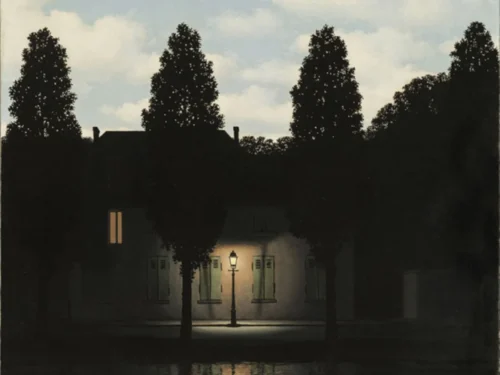
Rene Magritte
The above painting by Magritte served as inspiration for the set design of The Exorcist.
Adorno believed the concert goer bought a ticket not to enjoy the music but as a form of worship of the money in capitalism.
“The abstractions of an “enjoyable” exchange value underlie the listener’s absent-minded pseudo-pleasure. A shift in musical production underlies the regression of listening. This shift manifests a large-scale realignment in capitalist commodity production.”
Lambert Zuidevaart (Ibid)
In film, however, there was never a time when the production was not mediated by capital. And so, hence, there evolved a doubled layer of meaning. The congealed history in a Sirk or Hawks master-shot includes the regressive role of the viewer. The mimetic process knows what entertainment is and knows the auteur knows. At some level the autobiography is embedded in every film, only increasingly filmmakers deny this and resort to what amounts to a kind of Chatbox auteur process. To have a personal style there is the precondition that a person exists. The Spielbergian ethos is really the ideal of ‘nobody’ behind the camera. Nobody mining the nostalgic ‘never was’ in a near random ersatz symbol generator. And now there exists in more highly funded Hollywood film second generation Speilberg dupes (see the recent Netflix The Union, a film so empty that it seems to erase the memory of all who watch it. A warning label is needed). And here is introduced the groundwork for the second part of this post.

Ghirlandaio (1489, detail)
To donate to this blog (and to the Aesthetic Resistance podcasts, use the paypal button at the top of the page). I never monetize, but appreciate all donations.

from George McIntyre.
Re: The Godfather, Brando said he took the role since he felt it showed up the way American politics really works. The biggest irony is that, as with Wall Street’s Gordon Gekko, the Godfather movies ended up making those repulsive psychopaths popular. This trend would seem to find its culmination in those Scorsese epics.
Re: The Shining, I like your comment about “inoculation against the residue of Stephen King”. And it may be significant that King hated the Kubrick movie. It violated the theme of the father descending into madness since, as King noted with some justification, Jack Nicolson is clearly unbalanced from the start. I ought to sympathise with King here but there’s just something about him that’s always bothered me. And I recall soaking up the novels of his early run (from Carrie through to about Pet Sematary). I stopped when I realised that they all had a tint of totally manufactured pseudo-reality. And I reckon the reason why so many King stories are turned into movies is that they already read as movie scripts – or, at least, the clichéd Hollywood movie script.
And the nadir of this King/screen crossover must surely be that TV movie based on The Stand – the most dispiritingly PLASTIC looking movie ever made. And featuring the ferociously reactionary Gary Sinise.
So Kubrick’s Shining benefits immeasurably from being the one King adaptation that doesn’t feel like King at all. It may have something to do with what you once said about that sense of “the uncanny” you detected in Andrew Scott as opposed to the “prestige” feeling of Benedict Cumberbatch. No matter how “creepy” King tries to be, there is nothing remotely uncanny about his stories. They are “scary” in the way that a ghost train ride is scary. Nothing that happens in them is unexpected.
(The recent “Stranger Things” series is like a software-generated assemblage of King and Spielberg, mixed in with a bit of X Files. An indication of that polystyrene assembly line we now have for the entertainment industry.)
It’s interesting that you consider von Aschenbach’s music in Death in Venice to be kitsch since this music came from Mahler who was one of Adorno’s central cultural figures. Mahler’s music does indeed skirt kitsch but I agree with Adorno that this music dislocates the kitsch by way of contrast and context. Then again, the insertion of this music into the movie totally recasts the effect.
George…. good note on the Mahler. The issue was more with Aschenbach’s sensibility, and how he spoke about music (in the book anyway — a book Adorno collaborated on with Mann). But i probably should have clearer.
I just read a passage from Thoreau’s A Week on the Concord and Merrimack Rivers that may contribute to answering your general question on what constitutes Nature. He and his brother are rowing upstream when they encounter 2 men who are trying to ford the river. What the 2 men don’t realize is that they are on a peninsula and by heading upriver, their efforts to get to shore without getting wet will come to naught. Thoreau remarks
“Whether they got safely through, or went round by the locks, we never learned. We could not help being struck by the seeming, though innocent indifference of Nature to these men’s necessities, while elsewhere she was equally serving others. Like a true benefactress, the secret of her service is unchangeableness..”
Thoreau’s point seems as close to explainng Nature’s implacable quality as anything else I’ve read. It is not that Nature doesn’t change. If we approach Nature with a request it can satisfy, all well and good for us. If not, we go to great lengths to change it. I live at the end of the Rio Grande where the river is no longer a river because its nature didn’t serve the settlers’ requirements. As a result of all the dam and channel building, the river no longer floods seasonally, preventing the conditions for native plants and animals to thrive. Salt cedar has populated the places where cottonwoods once flourished. So now ridiculous efforts are made to eradicate the salt cedar. Rather than beginning with the understanding that humans made the wrong steps initially, well meaning people hack away uselessly at the salt cedar, much like the novices in Thoreau’s retelling. “When nearly a mile distant we could see [the men] stripping off their clothes and preparing for this experiment; yet it seemed likely that a new dilemma would arise, they were so thoughtlessly throwing away their clothes on the wrong side of the stream.”
very good. I was being partly rhetorical in a sense. But it was also a genuine question to a degree and you answered that. And reminded me of several other discussions of nature I am now remembering.
Don’t forget to mention Kubrick’s most underrated film, the magnificent “Lolita”
yes yes, and I am guilty of forgetting it, too. Nabokov quite liked it.